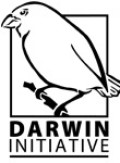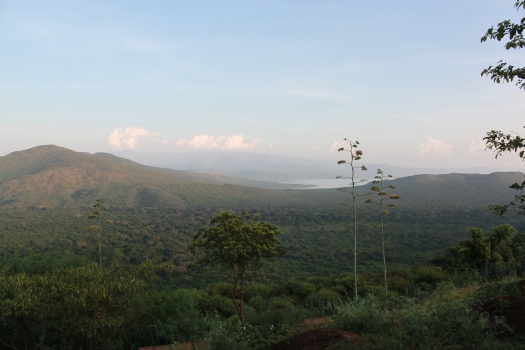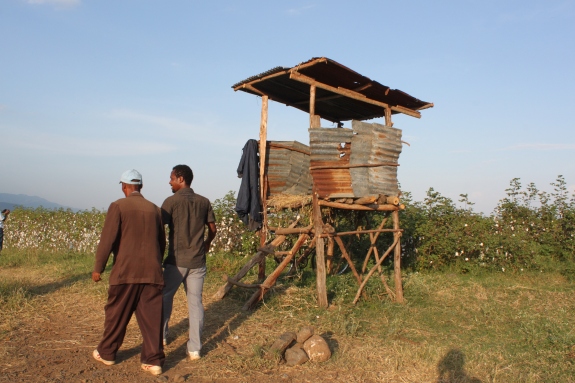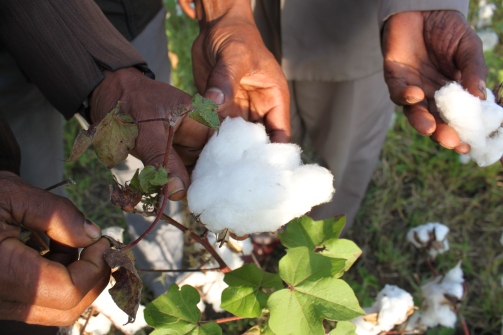The issue of sweatshops and child labour has become more and more prevalent in the news. This was especially so after the awful disaster at Rana Plaza in Bangladesh last year when the garment factory collapsed and over 1,100 people lost their lives.
Since then more attention has focused on how these garments are made and the conditions of these garment workers. But have you ever given much thought to where your fabric comes from even before we get to the issue of garment factories?
Cotton is a major cash crop in Ethiopia but little of this has made it to the international market. This is despite the fact that Ethiopia is thought to be one of the originators of cotton cultivation in the world. Part of the reason for the lack of cotton export is that much of cotton growing is done by small-scale farmers – in 2007/8, US$19 million of cotton was exported from Ethiopia compared to US$100 million for coffee in the same period.
Since 2013 the Darwin Initiative has been funding a project in Ethiopia that is focusing on the issue of cotton growers in southern Ethiopia. In November 2014 I had the opportunity to travel to Ethiopia to evaluate the project run by PAN UK in partnership with PAN Ethiopia. The aim of the project is to better understand pesticide use in farming (particularly cotton farming) in Ethiopia and seek to support these farmers to reduce their use of pesticides to the benefit of biodiversity and human health.
Pesticide use by both smallholder and commercial farms is widespread in southern Ethiopia. Prior to this project there had been a small number of studies that suggested that it was having a detrimental effect on biodiversity and human health but there was no systematic collection of evidence of what pesticides were being used and in what volumes. There was also no systematic monitoring of the impacts of this pesticide use on human health and biodiversity.
So back to Ethiopia or more specifically Arba Minch. An area that is not only beautiful and chock full of important biodiversity (it’s one of the most important flyway for birds in the Rift Valley) but it’s also home to many Ethiopian people whose primary source of income is agriculture particularly cotton.
Pesticide use is rife in Ethiopia. Part of the problem is when it was first introduced in the 1960s is the word given for it in Amharic was ‘medicine’. Farmers were taught that this stuff was magical and it could cure practically anything. The pesticides used up until very recently ranged from the nasty to down right scary pesticides like endosulfan and DDT. They applied it by hand with no protective clothing – they even used the left over containers for storing food. Scarily it is even applied directly to the skin or clothes to treat ectoparasites.
Thankfully there is this Darwin project is demonstrating to farmers that pesticides are harmful to people, to biodiversity and, through excellent systematic research, to yields. Because you see bizarrely pesticides are causing farmers to grow less cotton than no treatment at all! They’ve been teaching farmers to apply agroecological methods – in essence this means teaching them about biodiversity and its value to them. They use the phrase ‘farmers friends’ for insects and birds. Previously they thought all insects were harmful and would treat their farms excessively with pesticides if they felt there were too many insects. Now they discuss with one another what insects and birds they have on their fields and apply organic practices (including the low tech ‘food spray’ – more on this here). Applying these organic practices has resulted in up to 100% yield increases for these farmers.
The project is also supporting these farmers to establish cotton farming cooperatives with the intention that they achieve organic cotton certification and sell their cotton on the international market. A triple-win that will mean more money for the farmers, better health for the farmers and a stronger more biodiverse environment.
They are in talks to sell their cotton to H&M and C&A once they achieve certification. Which should mean these farmers will be entering the international market and securing a fair price for farming that doesn’t cause untold harm to their health, their family’s health and globally important biodiversity.
What about you? Do you ever think about where your fabric comes from or how your clothes are made? Have you attempted to change the way you buy or source your clothes to reduce your impact on poverty or the environment?





